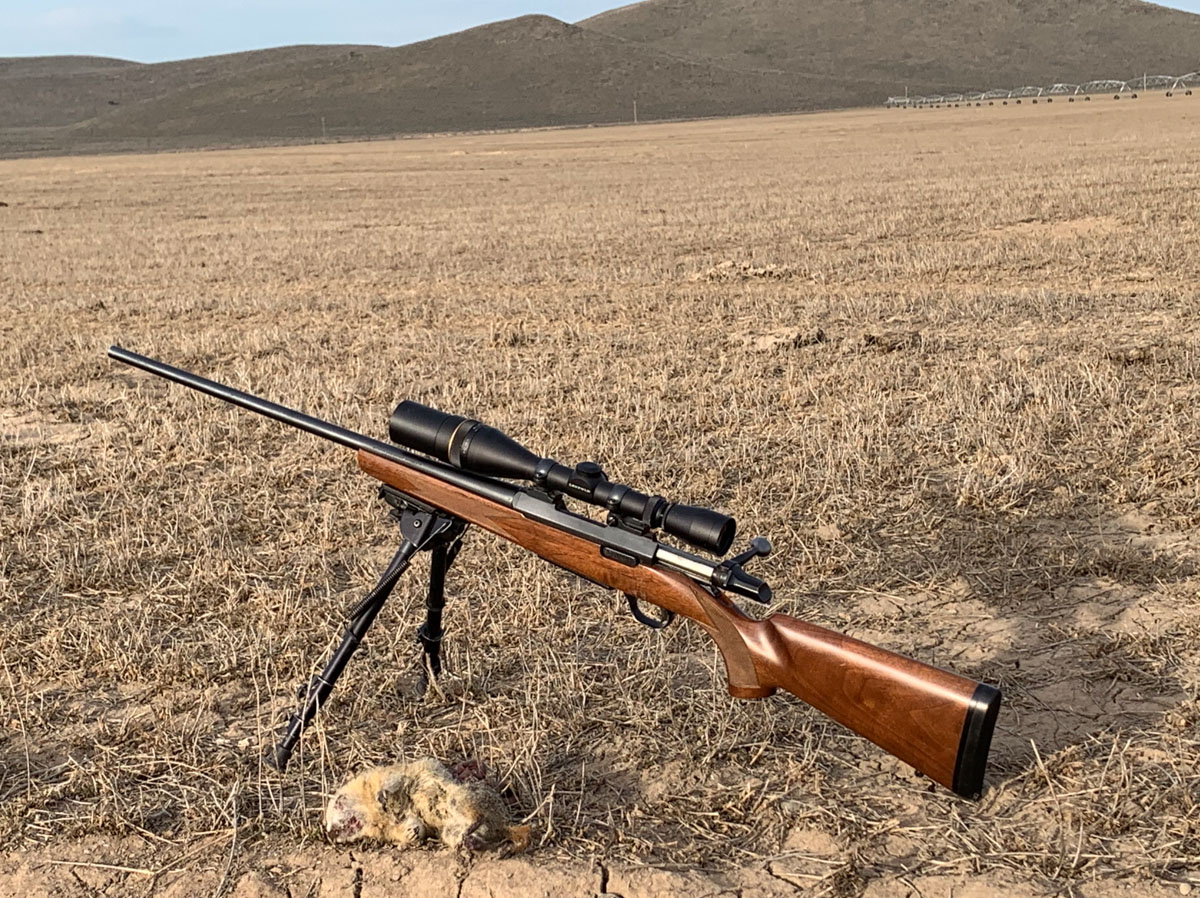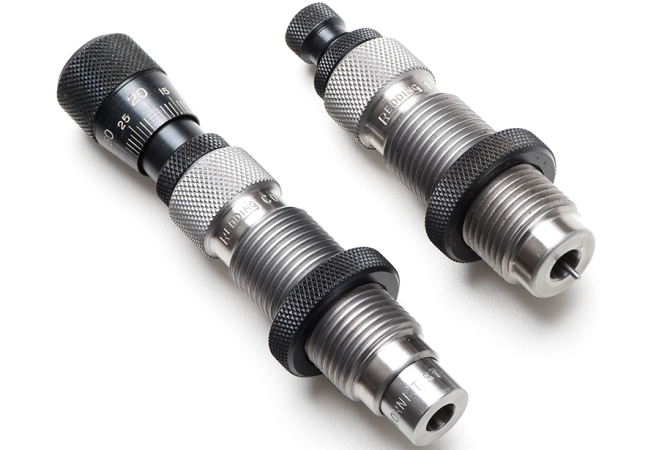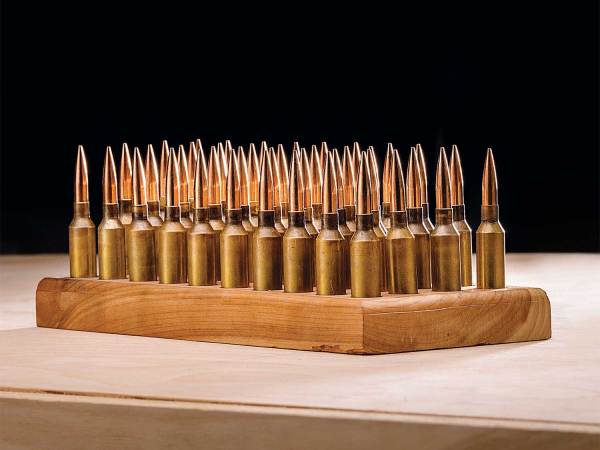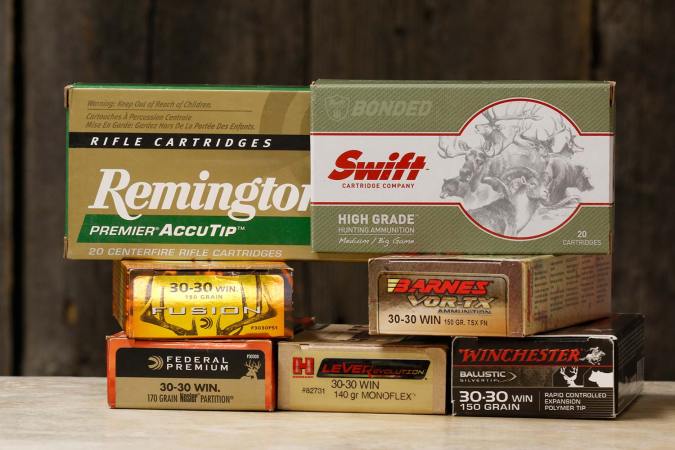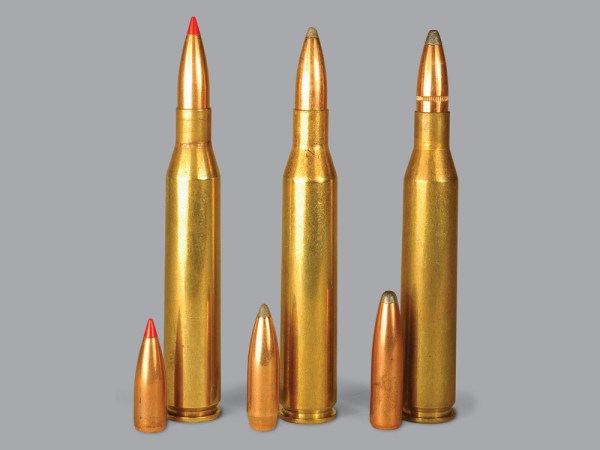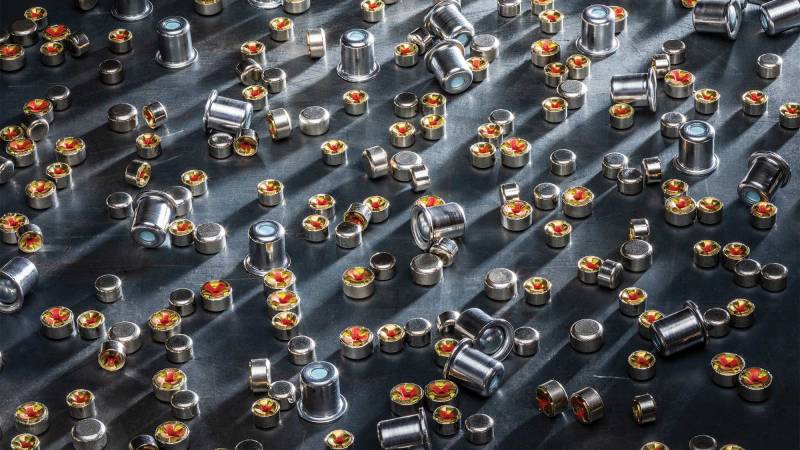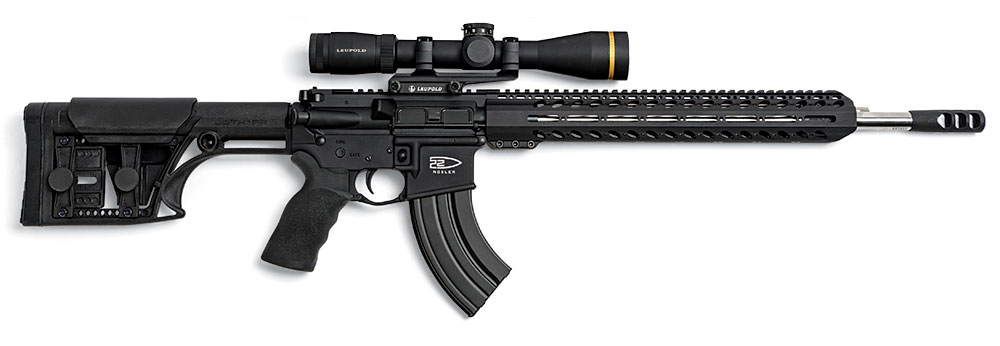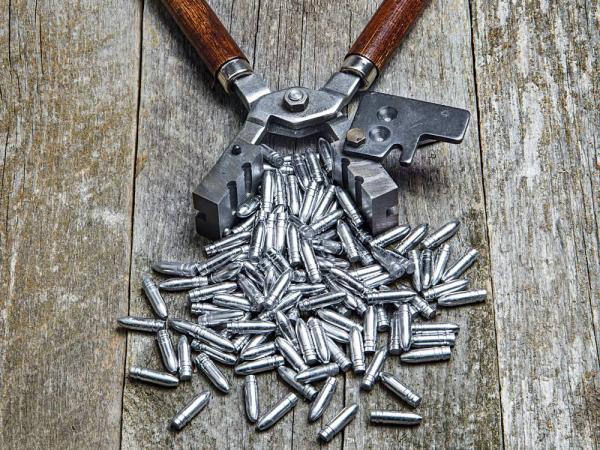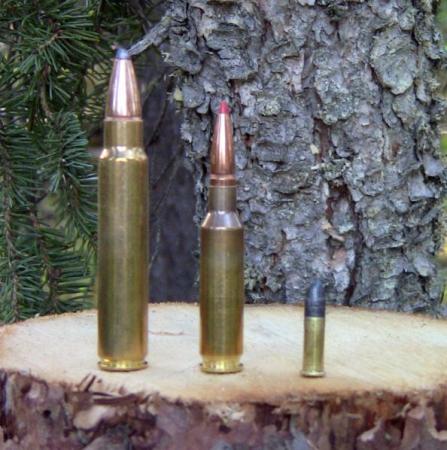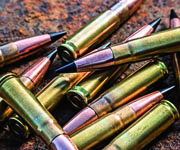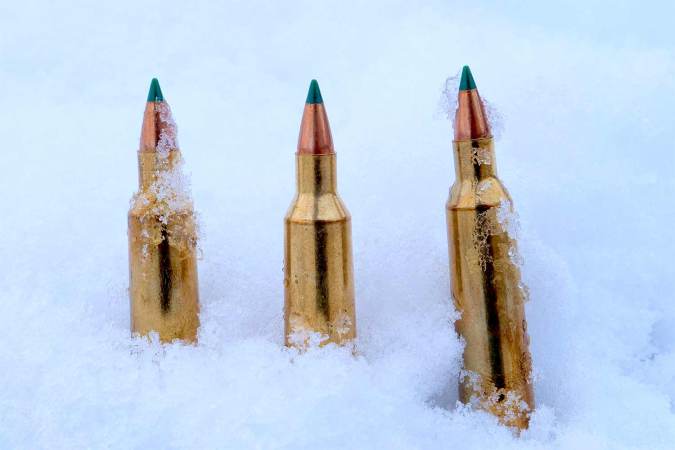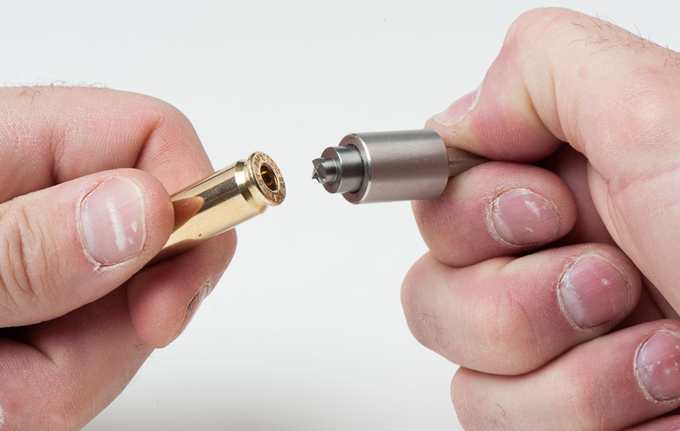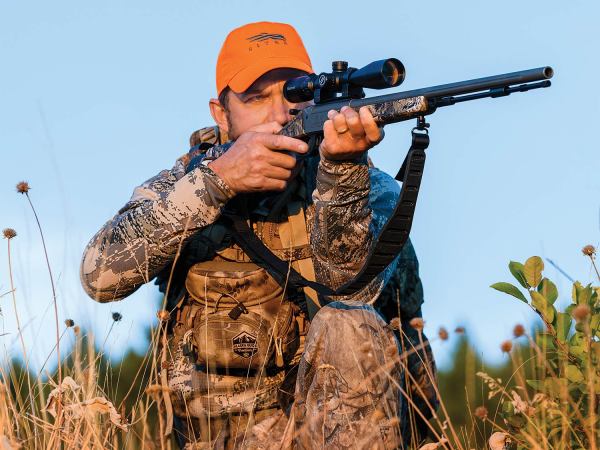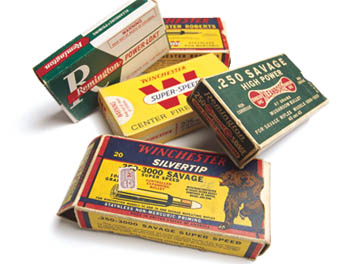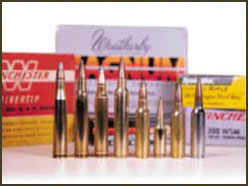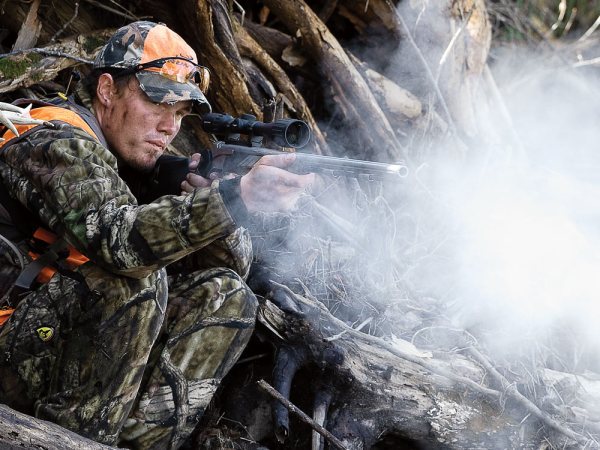We may earn revenue from the products available on this page and participate in affiliate programs. Learn More ›
If there is one cartridge that is defined by a split personality it is the unassuming .22 Hornet. Variously characterized as inaccurate, ideal for use around built up areas, difficult to load, providing milquetoast performance, perfect for the starting shooter—it is a cartridge filled with contradictions. While some of these criticisms are no doubt founded in fact, some of them persist from the cartridge’s inception close to a century ago. There is no doubt that in a modern firearm a handloader using modern components, good handloading technique, and good judgement can enjoy excellent performance on the range and in the field.
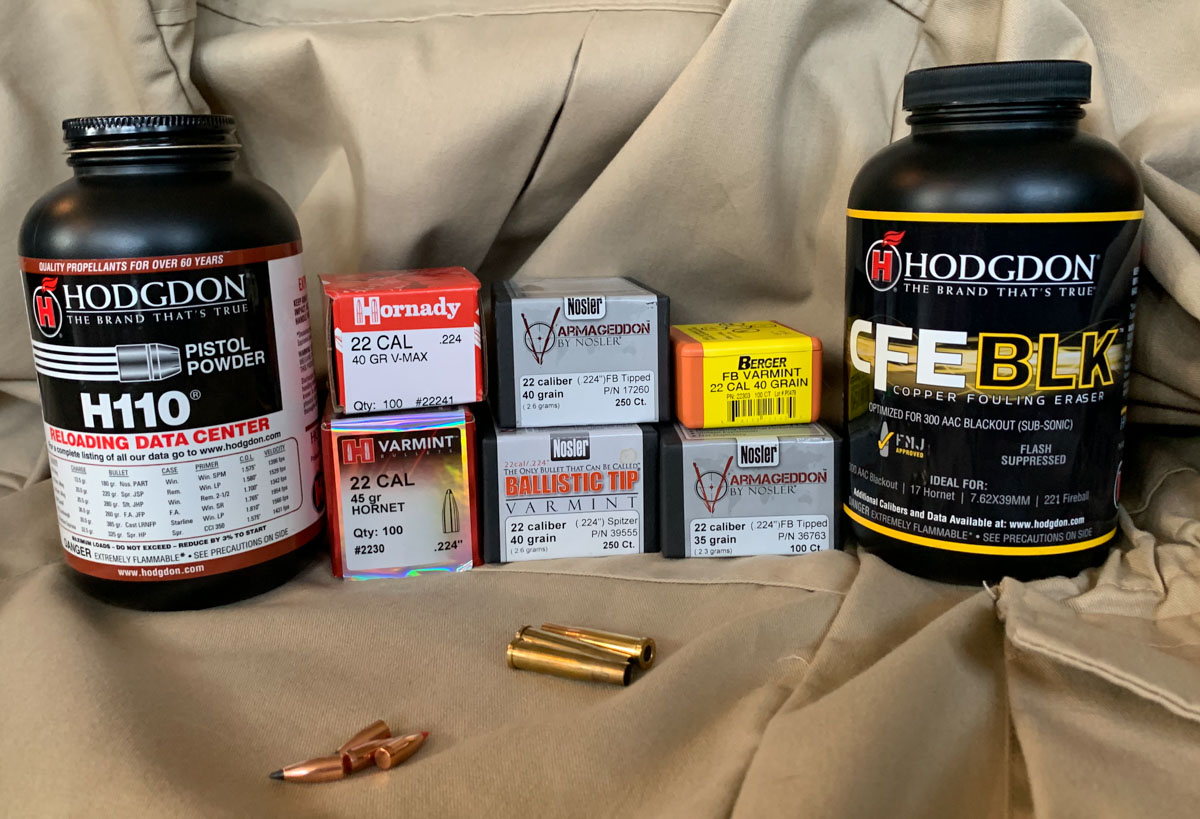
Reloading the .22 Hornet: A Case for Cases
No single component is more important or more variable in the .22 Hornet than the cartridge case. Remington, Winchester, Hornady, PPU, and Nosler all manufacture component cases that are usually (the last two years notwithstanding) readily available to handloaders. I’ve used them all at one time or another and found them all to be excellent—but they are not all created equal. This is important to remember, as differences in case capacity can create considerably different pressures with the same charge weights.
In my experience, Remington cases have been the lightest and most capacious, and therefore allow the highest charge weights. If you start your handloading with these cases, weigh some and make sure to compare the weight if you find yourself needing to change case brands at some point. PPU and Nosler cases are both significantly more robust and therefore heavier. In my firearms, they require a significant charge reduction to achieve the same velocity, but they usually last for several more firings because of their more durable construction. Winchester and Hornady cases are also heavier than Remington cases, though in my limited testing, not as heavy as the cases from PPU and Nosler.
Whatever cases you choose, never mix brands. Try to keep your lots the same. A case made in 2009 will often have different dimensions and weight than a case made 10 years earlier or ten years later. These are important considerations and one of the keys to maintaining safe performance from your firearm. All of them will make very good ammunition—it’s just a matter of tailoring the other components in your load to the case.
A Primmer on Primers for the .22 Hornet
Primer choice in the .22 Hornet is as contentious as politics or religion for many handloaders, and with good reason. Though I have only owned three Hornets, they have each had clear preferences when it came to primers. Generally, I have found that a standard small rifle primer such as the Winchester WSR, the Remington 6.5, or the CCI 400 work very well. In my current Hornets, the A-bolt prefers the WSR and the Contender is at its best with the Remington 6.5.
Notably, in my A-bolt, the Federal small pistol match primer works very well, too. In general, I would offer the same advice with the .22 Hornet as I would with any small cartridge. Try as many primers as you can and carefully note the differences. Chances are very good that your rifle or handgun will show a marked preference, as all my guns have.
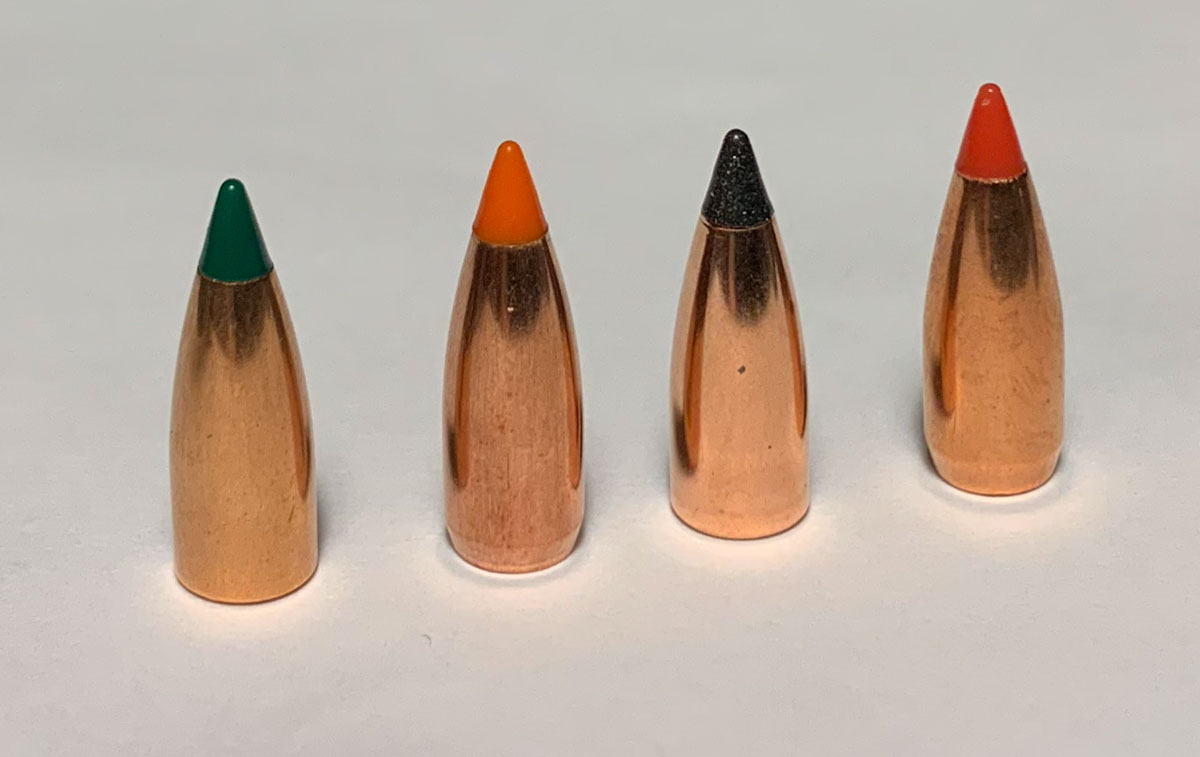
.22 Hornet Powders: New and Old
Thankfully, in the second decade of the 21st century, powders that are suitable in the .22 Hornet are more varied and capable than ever. The first powder that was really used for the cartridge was Hercules 2400. This powder is still available as Alliant 2400 and derived its name from the ability to drive a .22 Hornet bullet of the day at 2400 fps. While 2400 can still be used, and works well in some guns, we have a more varied and capable selection of propellants today.
From an accuracy standpoint, my own rifles have usually preferred H-110 or it’s clone, W-296. These powders have the great advantage of delivering near peak velocities with typical bullets of 35-45 grains, which is really the sweet spot of Hornet performance. Other excellent choices abound, however.
On the slightly slower burning (and more case filling, which often aids accuracy) side of the spectrum are powders like Li’l Gun, AA-1680, and CFE BLK. All are spherical and flow easily through the powder measure—an advantage both for speed of loading large volumes of ammunition and consistency of charge from shot to shot. Short-grained extruded powders, such as H-4227, IMR-4227 and VV N-110 are coarser, but can provide exceptional accuracy. I’ve had very good luck with 40-grain bullets and IMR-4227 paired with the Federal Gold Medal Match Small pistol primer, for example.
Better Bullets for Reloading the .22 Hornet
The best bullets for the .22 Hornet have come a long way—take advantage of the benefits they offer. When Nosler introduced the streamlined plastic tip to varmint bullets nearly 35 years ago, the Hornet was one of the cartridges that benefitted immediately. Originally designed around blunt nosed 40- and 45-grain bullets that rapidly shed velocity and energy, the Hornet was considered by many to be a 150-yard cartridge, at best. In fact, the earliest description I can remember of the .22 Hornet by some very serious handloaders I know was, “it’s a .22 magnum, +P”. Well, today nothing could be further from the truth, provided aerodynamic bullets are used.
That’s not to say some of the older designs don’t provide stellar accuracy and on-game performance, because they can and they often do. But if your barrel has the appropriate twist (1:14 inches for sure, and possibly some of the 1:16 twist barrels that are actually a little faster than indicated) the plastic tipped, aerodynamic bullets such as the 40-grain Ballistic Tip, V-max, Blitzking, and Varmageddon provide much flatter trajectory and velocity retention (which aids greatly in expansion) at ranges that would have caused the Hornet owners of yesteryear to sit up straight. On calmer days, it’s not at all out of the norm to be able to reliably hit and dispatch small varmints at 200 or even 225 yards.
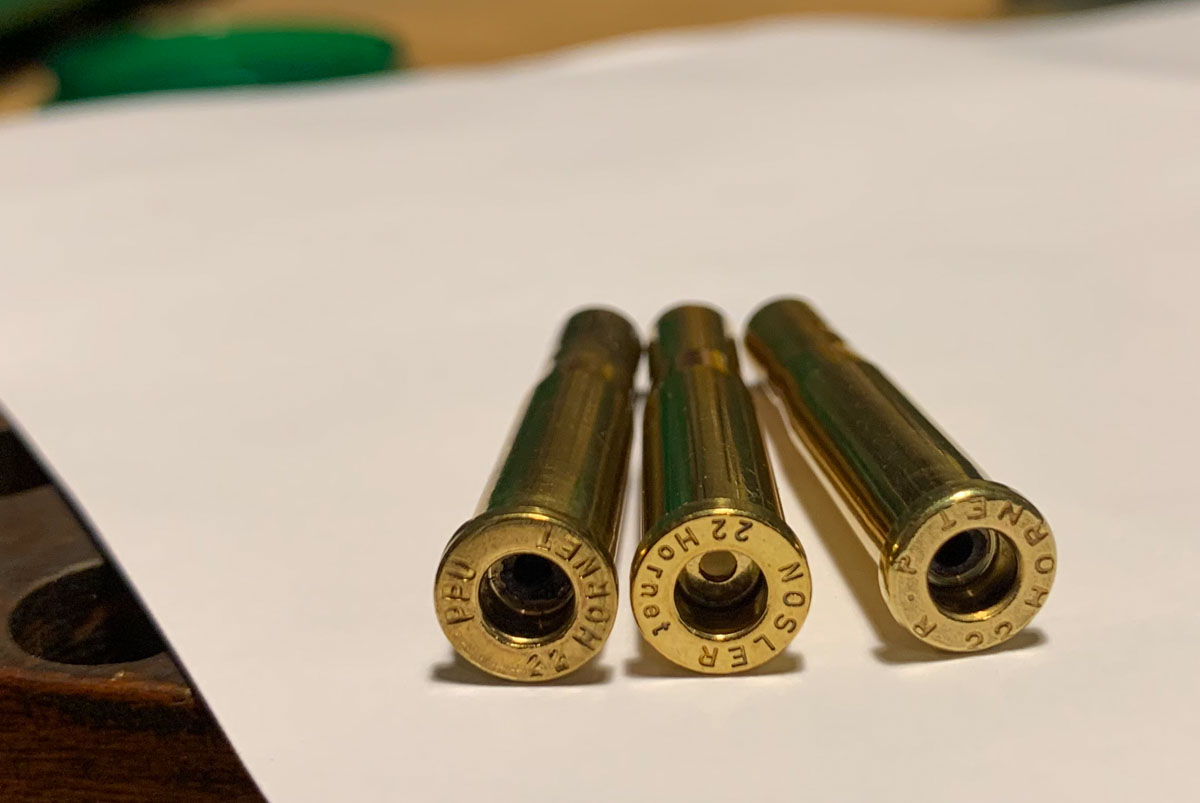
.22 Hornet on Larger Critters
In the slightly heavier realm, both Speer and Hornady make excellent 45-grain pointed soft points with thin jackets that will expand reliably, shoot fairly flat, and penetrate more deeply for larger varmints—such as eastern Groundhogs, western Rockchucks, and predators. I’ve had very good luck with both bullets from an accuracy perspective, and expect you will too.
On the lighter side, there are Barnes, Speer and Calhoon hollow points ranging from 30-37 grains. And there is the 35-grain V-Max from Hornady and now the 35-grain Varmageddon from Nosler. If your rifle is one with magazine length restrictions, you may find that one of these shorter bullets is the best choice to allow magazine fitment. The added velocity will help to make up some of the loss of ballistic coefficient, as well.
Tricks of the Trade When Reloading the .22 Hornet
I’ve heard and read many people lament the difficulty of loading the .22 Hornet over the years. In fact, these lamentations were one of the primary reasons I wanted to work with the caliber and while many of the difficulties I’ve heard of are true, most can be avoided with a little extra care.
Case preparation is essential. The .22 Hornet is a small cartridge where charge variations, neck tension, seating depth, and many other factors are more important because of the very small volume of powder consumed and the need for shot-to-shot consistency. With that in mind, there are a few tricks that can make a difference.
Case Sorting
Some go to the trouble of weight sorting cases—I do not. However, I am sure there would be some benefit. If you have time and want to have the most consistent internal case volume that you can, weigh them and segregate them into batches of similar weights.
Trimming to a consistent overall length is very important. I start every new batch of cases by trimming to consistent length and I measure a random sample of cases after firing to make sure that my lengths have stayed uniform and that they do not exceed maximum overall case length (listed in reloading manuals—1.403 in.). This is important for several reasons—safety being one of them as overlong cases can cause high pressure by failing to release the bullet easily—but uniform case length also allows for more consistent grip on the bullet.
Chamfer Brass
It’s a little thing, but I have found a good chamfer is also very important, particularly when seating flat based bullets that are often so accurate in this case. The case walls of the .22 Hornet are thin, and a good chamfer allows the bullet to start into the case easily during bullet seating and not collapse case walls—a complaint that is often heard by new Hornet owners. As an aside—take a little extra care to make sure the bullet is started straight in the case during the seating operation.
Primer pocket uniforming—again, some people will not want to do this as it takes time—especially on large batches of cases. I do it, simply because it makes me sleep better and is also the method I use to clean my primer pockets after each resizing. I use a Hollands uniformer or a Sinclair uniformer and have never found it to be overly bothersome. This results in a “square” primer pocket and allows the primer to have uniform contact and seating depth within the primer pocket every time.
Deburr The Flash Hole
Flash hole deburring. Again, this is a time-consuming process but one that is only necessary once in the life of the case. If you use cases that have been prepped by the factory, as some are, it’s unnecessary. My reasoning is that it will help the primer flash enter the case in a very repeatable manner from shot to shot. That said, does it make a tenth of an inch of difference at 100 yards? Hard to tell. I haven’t done the testing to back it up. It makes me sleep better and it may do the same for you—provided you have the time.
Mind Your Powder Charges
When testing loads be mindful of small variations in charge weight. This is one of the reasons I generally prefer spherical propellants—they flow easily and uniformly through a powder measure. I weigh every tenth charge when I am producing varmint ammunition to ensure that they are not straying from the intended number. If you change lots of powder, test a load (preferably over a chronograph) to be sure that velocity (and by extension, pressure) has stayed the same. I’ve had changes in powder lots make a significant difference in velocity, and if you load long enough, you will too. This is a key safety and accuracy detail that is important to not overlook.
In the Field with the .22 Hornet
My field experience with the Hornet has been fairly extensive over the last 20 years. My first Hornet, a CZ-527, provided excellent accuracy but was limited by the overall length of the magazine to traditional bullets and the then-new 35-grain Hornady V-Max. It left me wanting more, so I only used it for one or two seasons then sold it. Nevertheless, the 35, driven at nearly 3100 fps was more than a match for the ground squirrels I pursue—as long as ranges were kept under 175 yards or so.
Enter the A-Bolt. When browning designed the A-Bolt in .22 Hornet, they did a lot of things right. The barrel, like the CZ was rifled at 1:14 inches. Smart. It also had a magazine that allowed a seating depth of around 1.9 inches. That was even smarter. Suddenly there was a rifle on the scene that allowed shooters to take advantage of longer seating depths, placing bullets closer to the lands for increased accuracy, and with the right twist to take advantage of more modern bullets. At the time, I had access to a 100-yard indoor shooting tunnel and was astonished at what I was seeing on paper and over the Oehler chronograph system. Velocities with published data and 40-grain plastic tipped bullets exceeded 2900 fps and accuracy for five shot groups was consistently in the .5- to .6-inch range at 100 yards. It didn’t take long to realize that this was a completely different animal, and the last 15 years in the field have proved it tom me over and over again.
Read Next: Everything You Never Knew About Primers, and the New Technology That’s Revolutionizing Them
I was so enamored with the performance of the A-Bolt that I ventured into my first centerfire single shot handgun not long afterwards, with the purchase of a T/C Contender. This amazing little handgun has a 14-inch barrel, 14-inch twist, and provides the same ability to seat bullets out to the lands. Using a slightly lighter load with slightly heavier PPU cases, it consistently shoots .5-inch five-shot groups at 50 yards using Nosler Ballistic Tips and H-110. Top velocities easily exceed 2500 fps—making it an ideal varmint rig.
Final Thoughts on the .22 Hornet
For around a century, shooters have enjoyed loading and shooting the .22 Hornet. With care during the loading process and mindfulness of the cartridge’s capabilities and limits in the field, it is one of the most enjoyable cartridges I have ever used, and truly one of the unsung little gems of the sporting world.
